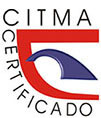Initial situation or orientation. Brief notes on its behavior in conversational narratives of speakers from Santiago de Cuba
Keywords:
conversational narratives, initial situation, syntactic strategies, deictic expressionsAbstract
Introduction: The initial situation, or orientation, is the part of conversational narratives that establishes the topic or point of the story and identifies the time and place where the events occurred.
Methods: The hermeneutic method, incorporating tools from linguistic discourse analysis, was used in the research to guide methodological choices and focus, as well as for sample interpretation. The study considers language in use, which is essential for research with a pragmatic orientation.
Results: A specific analysis is presented, taking into account the specific characteristics of the analyzed text type for studying the observed linguistic phenomenon. This approach ensures the adaptation of the findings to the specific communicative situation, allowing comparisons with similar studies conducted in other geographic locations, which can enable generalizations about the described behavior.
Conclusions: Spatial perception allows for the adoption of a specific referential anchorage for each conversational narrative, which is influenced by the story’s argumentative objective, the described physical environment, and the personal experiences of the narrator.
Downloads
References
BRIZ, A. Y GRUPO VAL.ES.CO. (2000). Cómo se comenta un texto coloquial. Ariel Practicum.
CASTILLO, R. Y CAMACHO, C. (2007). El uso de elementos indexicales en los textos narrativos orales sobre botijas y espíritus en la comunidad de Valle Guanape, Edo. Anzoátegui [Trabajo de grado, Universidad Central de Venezuela]. http://www.saber.ucv.ve/jspui/handle/123456789/807?mode=full
CIFUENTES, J. (1986). Espacio y enunciación en la dinámica textual de la Lengua Española. ELUA. Estudios de Lingüística, (3). https:// www.ua.es/personal/cifu/publicaciones/Espacioyenunciacion.pdf.
CONNELLY, M. Y CLANDININ, J. (1995). Relatos de experiencia e investigación narrativa. En GALLARDO, B. (1996). Análisis conversacional y pragmática del receptor. Laertes. https://www.elvira.lllf.uam.es/clg8/actas/pdf/paperCLG31.pdf.
GUTIÉRREZ, S. (2001). Las narraciones como recurso argumentativo. Revista del Centro de Ciencias del Lenguaje, 23(45). https:// www.es.scribd.com/doc/.../Las-Narraciones-Como-Recurso-Argumentativo.
LABOV, W. (1972). The Transformation of Experience in Narrative Syntax. En: Language in the Inner City: Studies in the Black English Vernacular, University of Pennsylvania Press.
LÓPEZ, H. (1994). Métodos de investigación lingüística. Ediciones Colegio de España.
SHIRO, M. (1999). Echar el cuento: hacia un perfil de las destrezas narrativas orales en niños caraqueños. Lenguas Modernas, (26-27), 135–167. https://lenguasmodernas.uchile.cl/ index.php/LM/article/view/454.
ULLOA, T. Y PÁJARO, P. (2022). Principales regularidades del comportamiento discursivo de la deixis espacial en relatos conversacionales de habitantes del barrio Olaya Herrera (Cartagena de Indias, Colombia): el caso de aquí, ahí, acá y all. SOPRAG, 10(1): 47-69. https://doi.oárg/10.17710/soprag.2022.10.1.ulloapajaro3
ULLOA, T. (2021). La interpretación deíctica. Un estudio en muestras orales de hablantes de la ciudad de Santiago de Cuba. Redillet, 12-30. http:// revistas.unc.edu.ar/index.php /ReDILLeT/article/view/36405
ULLOA, T. (2019). Instrumentos de análisis para caracterizar el comportamiento discursivo de la deixis espacial en relatos conversacionales. Sincronía, 451-480. https://www.redalyc.org/journal/5138/513859856023/
VAN DIJK, T. (1998). Texto y contexto. Semántica y pragmática del discurso. Editorial Cátedra.
Published
How to Cite
Issue
Section
License
Copyright (c) 2024 Leysi Tania Ulloa

This work is licensed under a Creative Commons Attribution-NonCommercial 4.0 International License.
Usted es libre de:
Compartir — copiar y redistribuir el material en cualquier medio o formato
Adaptar — remezclar, transformar y construir a partir del material
La licenciante no puede revocar estas libertades en tanto usted siga los términos de la licencia
Bajo los siguientes términos:
Usted es libre de:
Atribución — Usted debe dar crédito de manera adecuada, brindar un enlace a la licencia, e indicar si se han realizado cambios. Puede hacerlo en cualquier forma razonable, pero no de forma tal que sugiera que usted o su uso tienen el apoyo de la licenciante.
NoComercial — Usted no puede hacer uso del material con propósitos comerciales.
No hay restricciones adicionales — No puede aplicar términos legales ni medidas tecnológicas que restrinjan legalmente a otras a hacer cualquier uso permitido por la licencia.


















